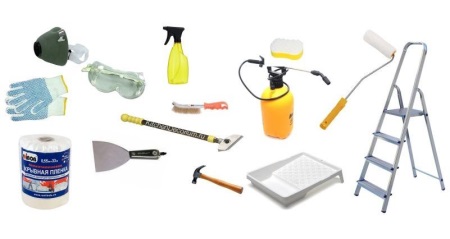How to remove paint from the walls in the bathroom?
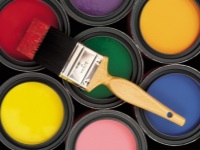
There are several ways to finish walls in the bathroom, the most popular of which remains ceramic tile. However, no matter what finishing material you choose, at the beginning of the repair, you will face a difficult task - the removal of the old finishing coat.
Buyers of apartments in new buildings, delivered "turnkey" most often become the owner of a bathroom, neatly painted a neutral color of water emulsion. Those who have purchased an apartment in an older building are often faced with a more serious problem - the walls are covered with many layers of old paint.
On how to get rid of the old coating and prepare the walls of the bathroom for a new finish, we will tell in detail in this article.
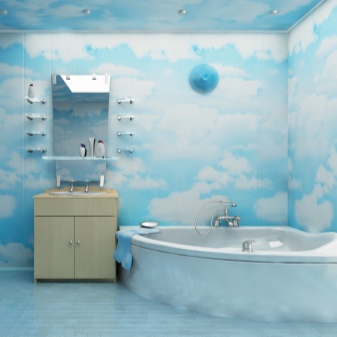

Mechanical ways
The most elementary way is to remove the old paint with the help of mechanical action. In other words, the coating can simply be knocked down or scraped off. Read below about how to remove paint mechanically with different tools at your fingertips.

Trowel
This is the oldest and simplest method, but it is also the most time-consuming. No special preparation is required, just cover all starchy surfaces in the bathroom with oilcloth. When processing the walls with a trowel, too much dust does not appear, so there is no need to protect the eyes and respiratory tract.
From the pluses of this method you can note the availability of tools (you can replace the trowel with a knife or a special scraper) and comparative quietness. In addition, so you can get rid of paint everywhere, even in corners and narrow partitions.
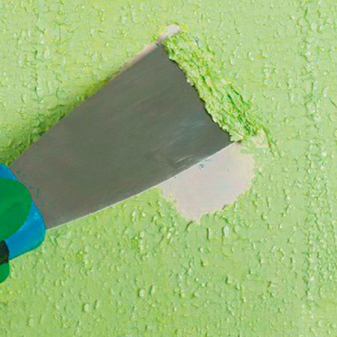

Using a trowel and chisel.
If the paint is only applied to the wall in one thin layer, and the coating is so old or of such poor quality that it begins to fall off on its own, you can get rid of it with just a spatula and chisel.
Provided the paint has already begun to peel, you'll get the job done very quickly. You just have to scrape the coating off the wall with reciprocating movements. The noise will be minimal and the amount of dust will be very small.
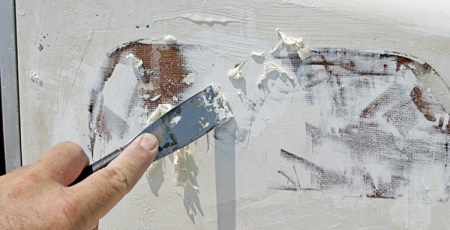
Use an axe or a mason's pick.
These tools should be used if you have a room where the walls are covered with several thick layers of paint. The axe should be small and not too sharp so that it is more or less safe to work with. Bricklayer's pick is a tool on a wooden handle with a metal tip, one side of which is blunt and the other is sharpened.
First, notches must be made all over the wall with an axe or the sharp end of the pick. The more notches and the smaller the distance between them, the easier it will be to remove the paint. There will be a lot more noise from these tools, but it will be faster than with a spatula.
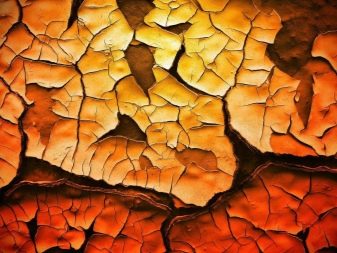
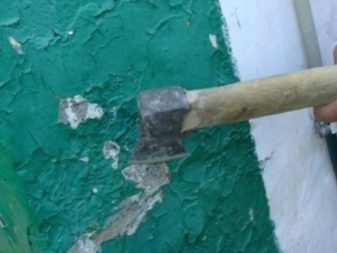
Some professional tips on how to properly use an axe to remove paint are contained in this video:
With a hammer and chisel
This solution is one of the most obvious, it is suitable for the removal of both single and multi-coat. You will need the most ordinary hammer, not too heavy, so that your hand is not tired. Experts advise to stock up on several types of chisels at once, as from time to time the tool will blunt. You may also need a sharpening device.
Working with a chisel and hammer will be quite time-consuming, since only a few square centimeters of paint can be removed in one blow. First, we lean the chisel against the wall, then gently hit it with the hammer. There will be enough noise, but very little dust, because the paint comes off in thin slabs with this method.
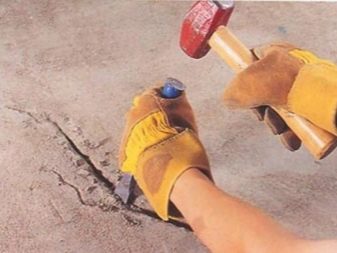

With a grinder, a bolt cutter or a rotary hammer.
Using a power tool is a more modern solution. Of course, there will be much more noise and dust than when working with hand tools, but you will cope with the task much faster.
The most convenient way to remove paint from walls is with a grinder with a diamond cutter, a bolt cutter or a rotary hammer. The advantage of this method is that it allows you to remove even paint applied directly to the concrete base. But you will need to be skilled in working with power tools. In addition, a large amount of dust can be a real problem, so you should work in a respirator and special protective goggles. It will not be superfluous to wear a cap or kerchief, as well as gloves.
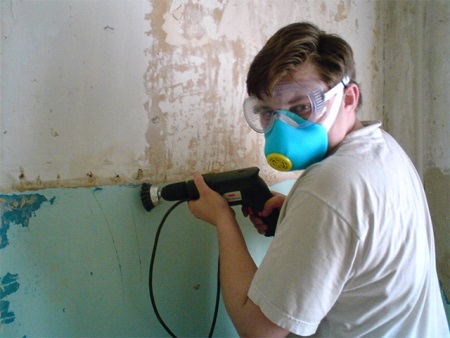
How to remove old oil-based paint with a power tool, told in a video by Alexander Shcherbakov:
Chemicals
Those who do not want to do hard physical work, you can advise a less time-consuming way - dissolving paint through various chemicals. Let's look at a few of the most available remedies.
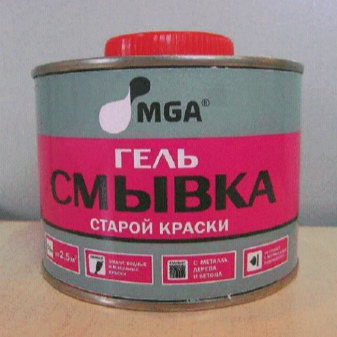

Organic solvents
This type of substances includes, for example, acetone or white spirit. Remember that they are far from harmless and can have a strong toxic effect. It is for this reason, at the time of the work in the house should not be pregnant or nursing women, children, allergic and asthmatic. Whoever will remove the paint should take care to protect the eyes, respiratory tract and mucous membranes.
The solvent is applied to the wall with a roller or broad brush and left until the paint softens. Then it is removed with a scraper or spatula. If the wall is covered with several layers of paint, each layer is removed separately. At the final stage of the work it is recommended to wash off the solvent residuals from the wall.
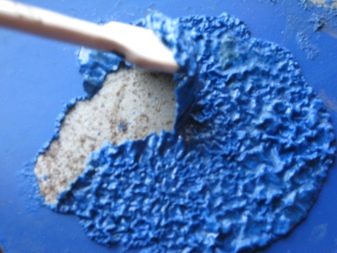
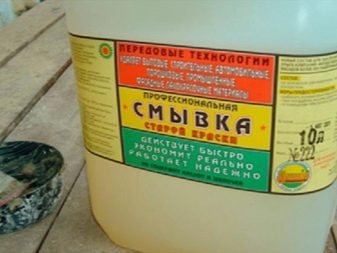
Mixture of soda ash and quicklime
The solution for removing old paint can also be prepared at home yourself. To do this, you will need one and a half kilograms of lime and one and a half kilograms of baking soda. Prepare a suitable container, fill it with both components, then, stirring, slowly add water. Stop when the mixture has the consistency of liquid sour cream.
The ready mixture should be evenly applied to the wall and left for the night (at least 12 hours). During this time the paint will soften and be easily removed from the wall with the mixture.
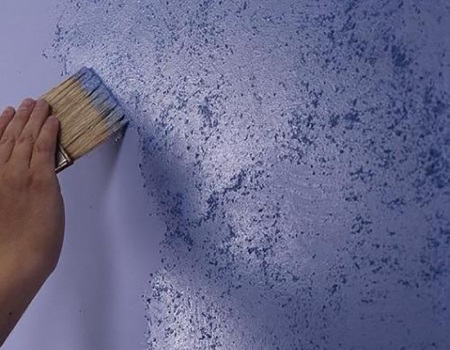
The thermal method
Professional trimmers often use the so-called thermal method for quick paint removal, which consists in exposing the old finishing coating to high temperatures. The paint should be heated with a powerful construction hair dryer, and removed with an ordinary spatula.
The stream of hot air must be directed at an angle; experienced craftsmen are able to simultaneously heat the surface with a hair dryer and work with a spatula. The disadvantage of this method is that it cannot be used on parts of the wall where electrical wiring is laid. In addition, when heated, the paint emits toxic substances, which are quite harmful to inhale.
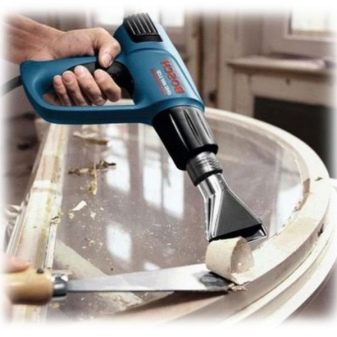
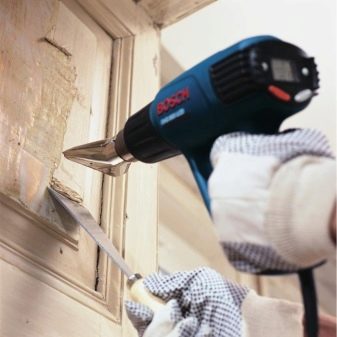
Removing water-based paint
Water-based emulsion paint is often used to finish walls in rooms with high levels of humidity. Despite the fact that water is one of its main components, removing water-based emulsion paint simply by washing it off with water does not work. First you will have to thoroughly wet the walls with plenty of warm water, wait until the paint softens, and only then proceed to the removal.
To moisten the walls well, it is best to use a roller. In this case you need to apply water to the paint again and again, because it dries up very quickly. Soaked paint gets very dirty, so it is recommended to cover all stained surfaces before starting work.
In addition to water, you can also use wallpaper paste, glue, or PVA diluted in water to remove water-based paint.
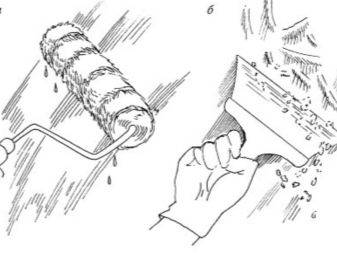
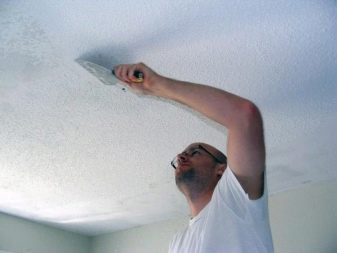
Acrylic Paint Removal
If the walls in the bathroom are painted with acrylic-based paint, it will be impossible to get rid of it with water alone. Acrylic paint can only be knocked down or scraped off. In doing so, it is best not to dampen the coating, but to work on a dry surface.
Acrylic paint can be removed with a coarse-grit sandpaper or an ordinary metal dish brush. Keep in mind that the higher quality the paint, the harder it will be to get rid of. If you plan to use acrylic paint again to finish the walls, the old coating can not be removed.
